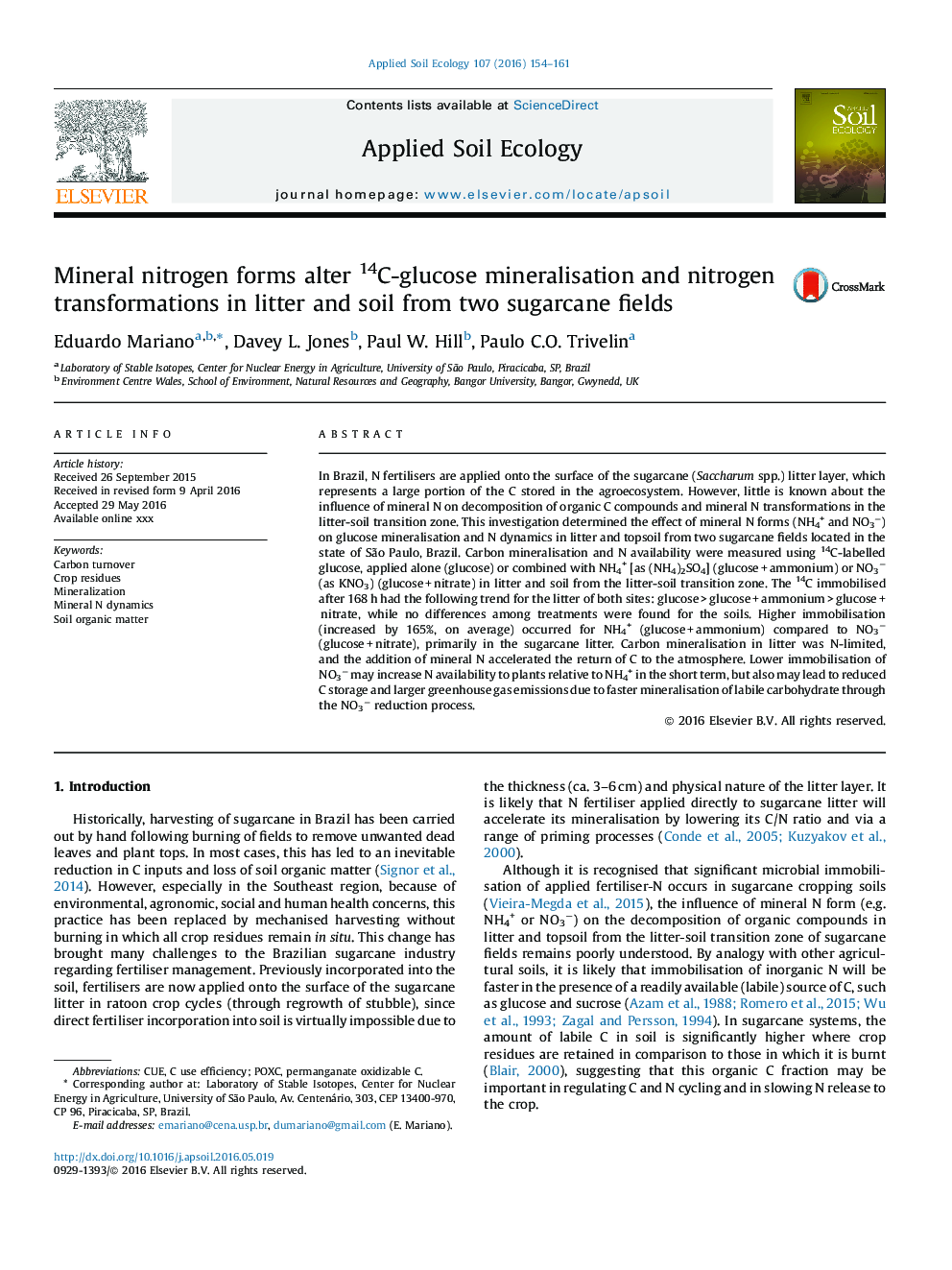| Article ID | Journal | Published Year | Pages | File Type |
|---|---|---|---|---|
| 6297611 | Applied Soil Ecology | 2016 | 8 Pages |
Abstract
In Brazil, N fertilisers are applied onto the surface of the sugarcane (Saccharum spp.) litter layer, which represents a large portion of the C stored in the agroecosystem. However, little is known about the influence of mineral N on decomposition of organic C compounds and mineral N transformations in the litter-soil transition zone. This investigation determined the effect of mineral N forms (NH4+ and NO3â) on glucose mineralisation and N dynamics in litter and topsoil from two sugarcane fields located in the state of São Paulo, Brazil. Carbon mineralisation and N availability were measured using 14C-labelled glucose, applied alone (glucose) or combined with NH4+ [as (NH4)2SO4] (glucose + ammonium) or NO3â (as KNO3) (glucose + nitrate) in litter and soil from the litter-soil transition zone. The 14C immobilised after 168 h had the following trend for the litter of both sites: glucose > glucose + ammonium > glucose + nitrate, while no differences among treatments were found for the soils. Higher immobilisation (increased by 165%, on average) occurred for NH4+ (glucose + ammonium) compared to NO3â (glucose + nitrate), primarily in the sugarcane litter. Carbon mineralisation in litter was N-limited, and the addition of mineral N accelerated the return of C to the atmosphere. Lower immobilisation of NO3â may increase N availability to plants relative to NH4+ in the short term, but also may lead to reduced C storage and larger greenhouse gas emissions due to faster mineralisation of labile carbohydrate through the NO3â reduction process.
Related Topics
Life Sciences
Agricultural and Biological Sciences
Ecology, Evolution, Behavior and Systematics
Authors
Eduardo Mariano, Davey L. Jones, Paul W. Hill, Paulo C.O. Trivelin,
